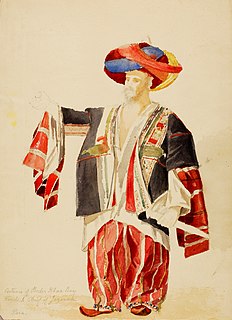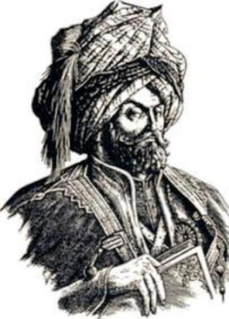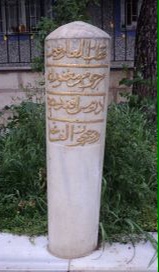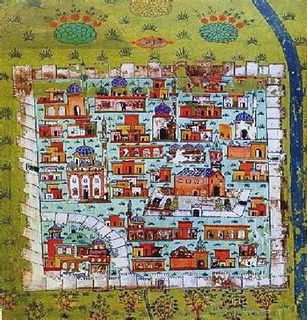Related Research Articles

Kurdistan or Greater Kurdistan is a roughly defined geo-cultural territory in Western Asia wherein the Kurdish people form a prominent majority population and the Kurdish culture, languages, and national identity have historically been based. Geographically, Kurdistan roughly encompasses the northwestern Zagros and the eastern Taurus mountain ranges.

The Kurds, are an Iranian ethnic group in the Middle East. They have historically inhabited the mountainous areas to the south of Lake Van and Lake Urmia, a geographical area collectively referred to as Kurdistan. Most Kurds speak Northern Kurdish (Kurmanji) or Sorani, which both belong to the Kurdish languages.

Diyarbakır is one of the largest Kurdish cities in Turkey. Situated around a high plateau by the banks of the Tigris river on which stands the historic Diyarbakır Fortress, it is the administrative capital of the Diyarbakır Province of south-eastern Turkey. It is the third-largest city in Turkey's Southeastern Anatolia Region, after Şanlıurfa and Gaziantep. The site was formerly the ancient city of Amida, and was of great importance in the Roman–Persian Wars, and during Late Antiquity was re-fortified with city walls by the Roman emperor; these walls remain standing.

Diyarbakır Province, is a province in southeastern Turkey. The province covers an area of 15,355 km2 and its population is 1,528,958. The provincial capital is the city of Diyarbakır. The province has a Kurdish majority and is considered part of Turkish Kurdistan.

Bedir Khan Beg was the last Kurdish Mîr and mütesellim of the Emirate of Botan.

Sharaf al-Din Khan b. Shams al-Din b. Sharaf Beg Bedlisi was a medieval Kurdish Emir of the Emirate of Bitlis. But he is more known as a historian, writer and poet. He wrote exclusively in Persian. Born in the Garmrood village, in central Iran, between Arak and Qom, at a young age he was sent to the Safavid's court and obtained his education there.

Sinjar is a town in the Sinjar District of the Nineveh Governorate in northern Iraq. It is located about five kilometers south of the Sinjar Mountains. Its population in 2013 was estimated at 88,023, and is predominantly Yazidi.

Turkish Kurdistan or Northern Kurdistan is a term that refers to the southeastern part of Turkey, where Kurds form the predominant ethnic group. The Kurdish Institute of Paris estimates that there are 20 million Kurds living in Turkey, the majority of them in the southeast.

The Principality of Bitlis (1182–1847) was a Kurdish principality originated from the Rojaki tribal confederation. Claiming descent from the Marwanid dynasty, the Rojaki defeated the Georgian King David the Curopalate and conquered Bitlis and Sasun in the 10th century. The principality occasionally came under the rule of outsiders, such as the Ak Koyunlu and the Safavids. After the decline of the Ak Koyunlu, the Rojaki princes asserted their independence. The principality supported the Ottoman Sultan Selim I and its rulers were named Noble Khans in return. In 1531, the Rojaki prince withdrew his support for the Ottomans and turned towards the Safavids instead, an event that lead to the capture of the principality by the Ottomans.

Bohtan was a medieval Kurdish principality in the Ottoman Empire centered on the town of Jazirah ibn 'Omar in southeastern Anatolia. Bohtanis were an ancient and prominent branch of the Kurds that claimed descent from the Islamic General and Sahaba Khalid ibn al-Walid. Some minor branches followed Yazidism but Sunni Islam predominated in the 14th century.

Idris Bitlisi, sometimes spelled Idris Bidlisi, Idris-i Bitlisi, or Idris-i Bidlisi, and fully Mevlana Hakimeddin İdris Mevlana Hüsameddin Ali-ül Bitlisi, was an Ottoman Kurdish religious scholar and administrator from Bitlis. There is some controversy about his actual place of birth possibly having been around Diyarbekir. He wrote a major Ottoman literary work in Persian, named Hasht Bihisht, which began in 1502 and covered the reign of the first eight Ottoman rulers.

The Eyalet of Diyarbekir was an eyalet of the Ottoman Empire. Its reported area in the 19th century was 20,332 square miles (52,660 km2), slightly larger than the original Abbasid province in Upper Mesopotamia. In 1846 it was succeeded by the Kurdistan Eyalet.

Mosul Eyalet was an eyalet of the Ottoman Empire. Its reported area in the 19th century was 7,832 square miles (20,280 km2). The eyalet was largely inhabited by Kurds.
A series of massacres in Hakkari in the years 1843 and 1846 of Assyrians were carried out by the Kurdish emirs of Bohtan and Hakkari, Bedr Khan Bey and Nurullah. The massacres resulted in the killing of more than 10,000 Assyrians and the captivity of thousands of others.
Massacres of Diyarbakır were massacres that took place in the Diyarbekir Vilayet of the Ottoman Empire between the years of 1894 and 1896 by ethnic Kurds and Turks. The events were part of the Hamidian massacres and targeted the vilayet's Christian population – Armenians and mostly Assyrians.

The history of Diyarbakır, one of the largest cities in southeastern Turkey and a metropolitan municipality of Turkey, spans millennia. Diyarbakır is situated on the banks of the Tigris River. The city was first mentioned by Assyrian texts as the capital of a Semitic kingdom. It was ruled by a succession of nearly every polity that controlled Upper Mesopotamia, including the Mitanni, Arameans, Assyrians, Urartu, Armenians, Achaemenid Persians, Medes, Seleucids, and Parthians. The Roman Republic gained control of the city in the first century BC, by which stage it was named "Amida". Amida was then part of the Christian Byzantine Empire until the seventh century Muslim conquest, after which a variety of Muslim polities gave way to the Ottoman Empire in the 16th century. It has been part of the Republic of Turkey since the dissolution of the Ottoman Empire in the early 20th century.
Kurdistan Eyalet was an eyalet of the Ottoman Empire. It was the first time that the Ottoman Empire used the term "Kurdistan" to refer to an administrative unit rather than a geographical region. It was formed with the aim of establishing direct control over Kurdistan, rather than recognizing it as a political entity. It was a short-lived province as it only lasted about 21 years, between 1846 and 1867. This time was marked by the lack of a powerful Kurdish ruler in the region. It led to the rise of the religious sheikhs belonging to the Naqshbandi and Qadiriyya dervish orders, or tariqas. It was formed after Bedir Khan Beg was defeated and sent to Istanbul. Initially the eyalet covered the region of the former Kurdish Emirate of Bohtan, but it was expanded gradually and at its widest extension included the former Diyarbekir Eyalet and the areas around Van, Hakkari and Muş, as well as the districts of Botan, Mardin, and Cizre. According to the salnames between 1847 and 1867, it was ruled by the central Ottoman government and received annual funding of 80,000 piastres, considerably more than the Mosul Eyalet. In 1867 it was abolished and succeeded by the Diyarbekir Vilayet. During its existence, it saw twelve different governors who had either the title of müsir or vizier.

Bingöl emirate (1231-1864) or Suveydi Emirate was a Kurdish Emirate reigning in Bingöl region between 1231 and 1864.

Principality of Zirqan (1335-1835) was a Kurdish principality founded in the north of Mardin in 1335.During the Aq Qoyunlu period, they controlled the Bitlis, Diyarbakır and Mardin regions. Zirqan principality consisted of Ataq, Tercil, Gürdükan and Mihrani regions.